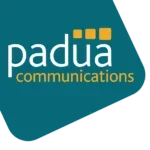USPs, elevator pitches and messaging – they’re quite often bundled altogether. When we work with clients, defining their message is one of the key starting points of a campaign. Many companies take their features and assume these are benefits, for instance, ‘We’ve been established since 1972’, but think for a second. What does this actually mean to a customer? If you complete the sentence focusing on a benefit such as, ‘We’ve been established since 1972 so have experience of your industry and the challenges it faces,’ it has a lot more impact.
We are drowning in information and more of us are getting information overload on our mobiles and through the various channels out there. I regularly like to stop and think for a moment and ask myself this question, ‘What messages have got through to me today?’ Go on, try it.
I guarantee the messages that will have stuck will have two absolute factors about them.
- They are clear and meaningful to you
- You will probably have heard them before – this is a repeated message
Consistent messages
As businesses evolve, they create more information – more customers, more sales, more services. With this creation of new material, take some time to evaluate what your message is. Is it consistent across all of your marketing materials? Are you trying to match something that you did five years ago with a new website. If so, this will confuse customers. For people to trust you and want to buy from you, they need to understand what your sales proposition is and they need to feel that they know you and that they will get a consistent experience, no matter who they deal with across your organisation. This experience is made up of how your messages relate to them, how often they hear them, how clear and consistent they are and whether they are tailored to something that they need.
Your message needs to be clearly defined. Don’t use jargon and, if possible, really highlight your customer’s problem or pain point and then demonstrate how working with your company can solve this. Use simple, clear language and write in short sentences (Roger Hargreaves’ Mr Men books are an inspiration for me!)
Aim to have no more than three key messages in any one campaign – you’ll water the effect down and lose your customer’s focus. Having key messages defined is crucial for media interviews too. You may want to read this blog from Rough House Media as it has a great example. Spot who needed media training! Failing that, come and do a brand messaging workshop with Padua Communications.
So what are my three messages?
- Be clear with your communication and use simple language
- Be consistent with your messages across your different marketing materials and ensure this happens right across your organisation
- Regularly communicate with your customers (old, new and existing) and tailor your message so that the benefit of working with you solves one of their problems.
Free marketing & PR resources
Sign up we’ll send you our free marketing and communications newsletter packed with helpful advice, along with details of our events.










